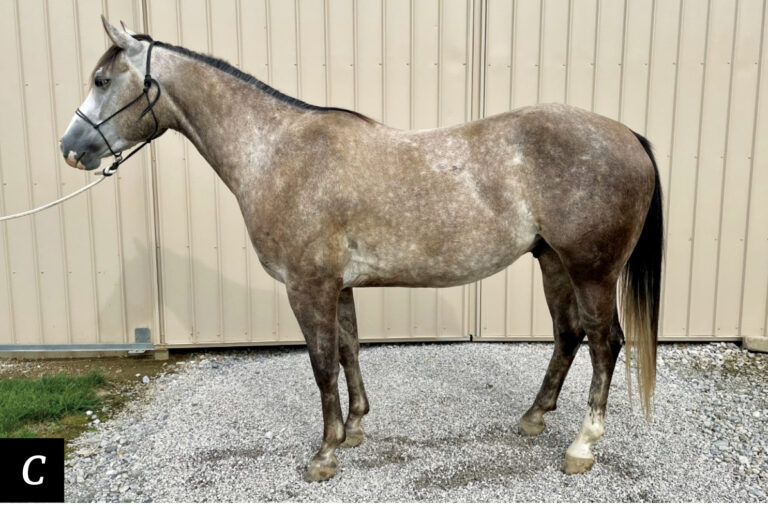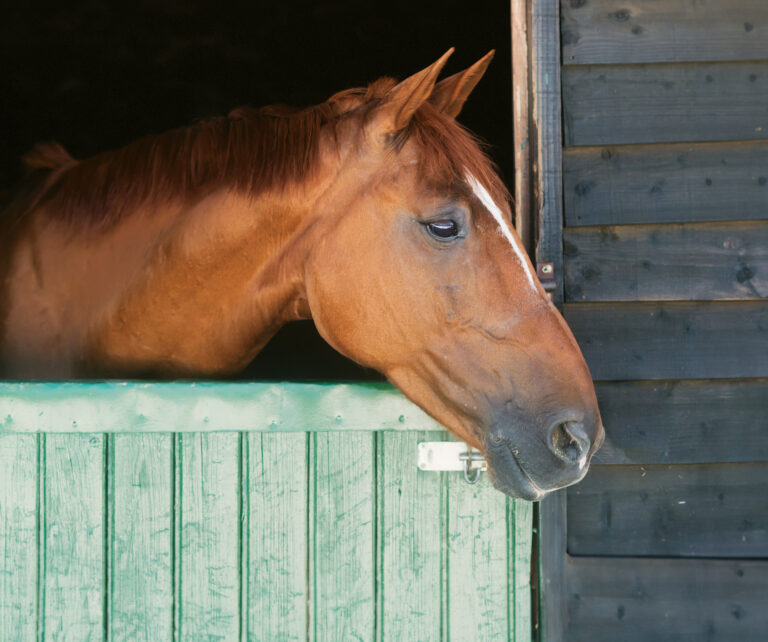
When your foal is ready to wean (typically from the age of four months and older), you may be dreading those first few days of separation. Help ease your separation anxiety with these weaning tips:
Choose the right weaning method. You may choose to wean your foal cold-turkey, gradually, or within proximity to the mare (but in a way that no nursing is possible.)
Pick a familiar spot. Ensure that your foal is familiar with the spot you choose to place him during the weaning period (needs to be completely separated from the mare, out of sight and hearing); this will keep from adding more stress to your foal during an already stressful time.
Choose a buddy. Provide a companion for your foal, either another foal, horse, or goat to keep him from feeling isolated and lonely. Caveat: While studies have found that foals kept in pairs during weaning showed less stress, Virginia Tech’s Middleburg Agriculture Research and Extension Center (MAREC) checked blood cortisol (stress hormone) levels of foals during the weaning process and found just the opposite–that foals weaned together in a stall worried each other and had higher blood cortisol levels than foals weaned separately in stalls.
Feed well. Make sure your foal is used to eating some sort of commercially mixed feed or hay ration. Look for a feed concentrate that includes zinc, vitamins E and C, selenium, and antioxidants, which will all help reduce stress. Make sure to provide plenty of fresh water.
Never attempt to wean an unhealthy foal. Too much stress can lead to sickness, because the foal’s immune defenses are lowered if he is emotionally upset and not eating properly. Stress may also lead to injury if the foal spends a lot of time running frantically or trying to get through a fence.
Deworm and vaccinate before weaning. Any healthcare practices (i.e. deworming, vaccinations, hoof trimming) should be done before weaning, when the foal isn’t under stress.
Create a safe stall. If your foal will be confined to a stall, take out feeding buckets and hay feeders where possible, and make sure there isn’t anything in the stall that might cause injury.
Avoid layering stresses. Make sure both mare and foal are in excellent health before weaning. Back-to-back stress (like weaning followed by hauling to shows) is often the reason why foals weaned in August, then taken to a futurity in September, will come home sick.
Check your mare’s udder. While your mare might be uncomfortable during weaning, don’t milk her out. You’ll signal her body to produce milk and prolong the time it takes for her to dry up. Do check to make sure she doesn’t have heat and swelling (signs of mastitis).
Help your mare produce less milk. Taper your mare’s grain ration gradually before weaning, then remove it for about two weeks from the day of weaning to help drop her milk supply.
Teach basic groundwork skills. (i.e. accepting a halter and leading) will make it easier to move and interact with your foal
Wean in a group. If you have three or more mare and foal pairs, consider pasture weaning, where all three pairs start out together in a familiar pasture (preferably with the addition of a kind older mare or gelding), and one mare is taken away every two to three days. When all mares are taken away, the foals are left with the older mare or gelding as a babysitter.
Keep a schedule. Create a weaning schedule with day-by-day instructions and training plans for your foal while he’s being weaned. Chart behavior and progress.







